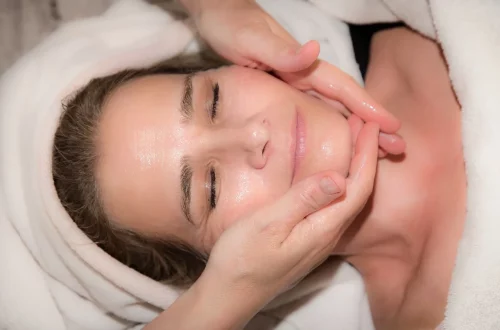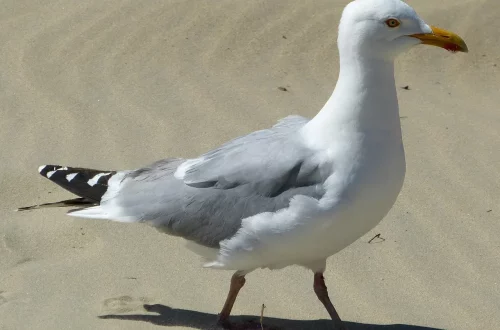
Do French Bulldogs Have Tails? Understanding Their Unique Anatomy
French Bulldogs are one of the most beloved dog breeds around the world, known for their distinctive looks and charming personalities. Their compact size, bat-like ears, and distinctive face make them instantly recognizable. One of the more curious aspects of their anatomy is their tails, which can vary quite a bit among individual dogs. Unlike many breeds with long, flowing tails, the French Bulldog’s tail is short, often leading to questions about whether they actually have tails at all.
This breed’s unique physical characteristics stem from a combination of genetics, selective breeding, and the breed’s history. Over time, French Bulldogs have been bred for specific traits that enhance their appearance and temperament. Understanding the nuances of their anatomy is essential for potential owners and dog enthusiasts alike. It provides insights into breed standards, health considerations, and the overall care that these delightful companions require. So, let’s delve into the anatomy of French Bulldogs and clarify any misconceptions about their tails.
Understanding the Anatomy of French Bulldogs
The anatomy of a French Bulldog is quite unique compared to other breeds. These dogs were originally bred to be small companions, which has significantly influenced their physical structure. Their compact bodies, characterized by a broad chest, muscular build, and short legs, lead to a distinct appearance that many find endearing.
One notable feature of their anatomy is the shape and length of their tails. In contrast to breeds known for long, graceful tails, French Bulldogs typically possess either a very short tail or, in some instances, a tail that is completely absent. This trait is often referred to as “corkscrew” or “screw” tails. The anatomy of the tail is influenced by their genetic makeup and selective breeding practices aimed at emphasizing the breed’s compact size.
The tail of a French Bulldog can vary widely among individuals. Some may have a short stub, while others might exhibit a more pronounced corkscrew shape. Regardless of the tail’s appearance, one constant remains: it is significantly shorter than that of many other dog breeds. This characteristic does not impact the dog’s ability to communicate or express emotions, as French Bulldogs rely on body language, vocalizations, and facial expressions much like other dogs.
The absence of a traditional tail can sometimes raise concerns regarding health and mobility. However, French Bulldogs are generally agile and active, capable of engaging in various activities despite their unique anatomical traits. Their physical structure, while different, does not hinder their playful nature or affectionate demeanor.
In summary, the anatomy of a French Bulldog is a fascinating blend of genetics and purpose-driven breeding. Their unique tail structure is just one aspect of what makes them special, and understanding this anatomy helps to appreciate the breed even more.
The Role of Tails in Dog Communication
Tails play a crucial role in canine communication, serving as a key indicator of a dog’s emotional state. While many breeds use their tails expressively, French Bulldogs have adapted their communication methods to compensate for their shorter tails. Understanding how these dogs communicate can deepen the bond between pet and owner.
In general, a dog’s tail position and movement can signal a variety of emotions. A wagging tail often indicates happiness or excitement, while a low or tucked tail may suggest fear or submission. For French Bulldogs, even though their tails are short, they still exhibit these behaviors. Their tails may wag vigorously when they are happy or excited, while a relaxed tail can indicate calmness.
Moreover, facial expressions and body posture also play significant roles in how French Bulldogs convey their feelings. Their large, expressive eyes and wide mouths can communicate a range of emotions, from joy to confusion. Owners can learn to read these signs, helping them understand their dog’s needs and feelings better.
Despite the unique tail structure, French Bulldogs are adept at using other parts of their anatomy to express themselves. For instance, their ears are highly expressive and can indicate alertness or curiosity. A playful French Bulldog may have perked-up ears and a bright expression, while a more relaxed dog may have their ears in a neutral position.
In conclusion, while French Bulldogs may not have traditional tails, they are still capable of effective communication. Understanding their body language and the signals they send can enhance the relationship between the dog and its owner, ensuring that both parties are in tune with each other’s emotions.
Health Considerations Related to Tail Structure
When discussing the anatomy of French Bulldogs, it’s essential to consider the health implications of their unique tail structure. While many dogs thrive regardless of tail length, certain anatomical features can lead to specific health issues that owners should be aware of.
The brachycephalic nature of French Bulldogs—characterized by their short snouts—can sometimes lead to complications, particularly regarding breathing and temperature regulation. While their short tails are not typically linked directly to life-threatening health concerns, they can be associated with conditions such as “hemivertebrae” or other spinal issues. These conditions are often the result of the abnormal development of the vertebrae that can affect the tail and the dog’s overall mobility.
Additionally, a corkscrew tail can sometimes create a risk for skin infections. The folds of skin around the tail may trap moisture and debris, leading to irritation or infections. Regular grooming and hygiene practices can help mitigate these risks and keep your French Bulldog healthy.
Another consideration is the potential for tail injuries. Even though French Bulldogs have short tails, they can still sustain injuries, especially if they are very active. Owners should monitor their dogs during playtime to ensure they are not at risk of hurting themselves.
In summary, while the unique tail structure of French Bulldogs can pose some health risks, being proactive about care and monitoring can help mitigate these issues. Regular veterinary check-ups and attention to grooming can ensure your French Bulldog remains happy and healthy.
Caring for Your French Bulldog’s Tail and Overall Health
Caring for a French Bulldog involves more than just regular feeding and exercise; it requires a comprehensive approach to ensure their unique anatomy is taken into account. Proper care for their tail and overall health is essential in maintaining a happy and vibrant dog.
First and foremost, regular grooming is vital. As previously mentioned, the skin folds around the tail can trap moisture, leading to potential infections. Owners should regularly check the area for any signs of irritation or infection. Using gentle cleansers and keeping the area dry can help prevent any issues.
In addition to grooming, maintaining a healthy diet is crucial. A balanced diet rich in nutrients can support overall health, including skin and coat health. Consult your veterinarian for recommendations on the best food for your French Bulldog, taking into account their age, weight, and any specific health needs they may have.
Regular exercise is also an essential part of keeping your French Bulldog healthy. Despite their compact size, these dogs require daily physical activity to stay fit and mentally stimulated. Short walks, playtime, and interactive games can help keep them engaged.
Lastly, routine veterinary visits are critical for monitoring your French Bulldog’s health. Regular check-ups can help catch any potential issues early, ensuring your dog remains happy and healthy. Your vet can provide specific guidance tailored to your dog’s anatomy, including recommendations for managing any potential health issues related to their tail structure.
In conclusion, caring for your French Bulldog involves a holistic approach that considers their unique anatomy. By prioritizing grooming, nutrition, exercise, and veterinary care, you can help ensure your dog lives a long, healthy, and happy life.
—
**Disclaimer**: This article is for informational purposes only and should not be considered medical advice. For any health concerns regarding your pet, please consult your veterinarian.




